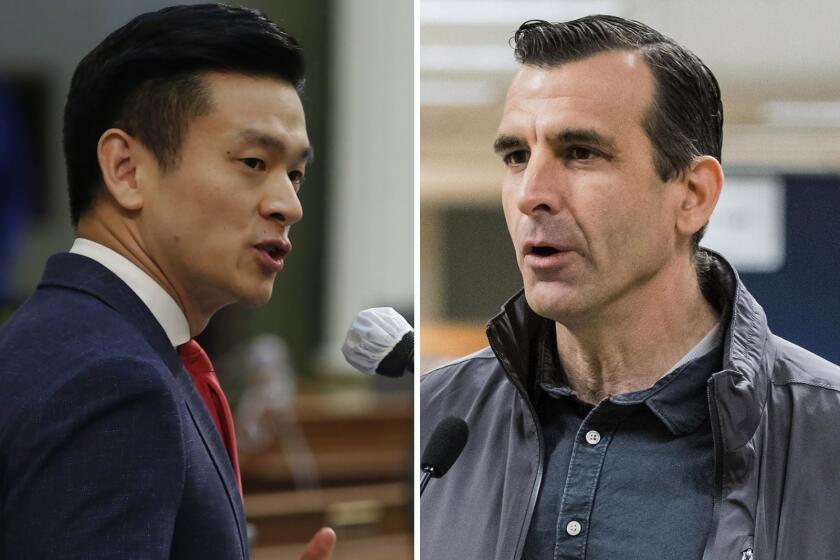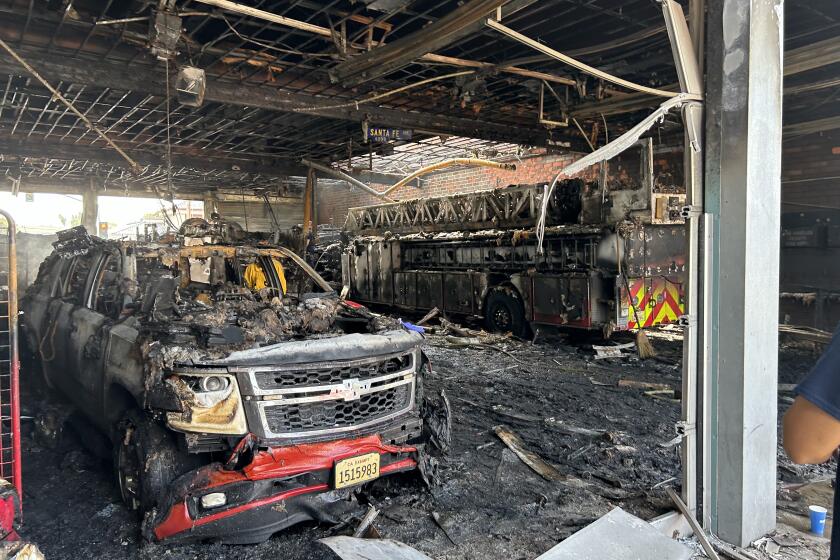Years Later, MTA Bus Dispute Back Where It Started
It’s back to square one in the years-long dispute between the county’s giant transit agency and the disgruntled bus riders who secured a federal agreement to compel the agency to boost bus service.
The release of a Metropolitan Transportation Agency report Thursday signals the dispute’s return to the hands of Donald T. Bliss, the mediator whose 1998 ruling touched off a costly legal battle that only ended last week, when the transit agency was rebuffed by the nation’s highest court.
MTA officials at the agency’s board meeting released a 52-page report outlining what they’ve done to follow the agreement to improve bus service--and how they intend to satisfy its remaining five years.
The report was released on the same day the MTA board explored providing schedules and route maps at more bus stops. The board also heard advocates for the disabled community decry cutbacks in paratransit services.
Not surprisingly, the MTA’s report stated that it is closely adhering to the federal agreement, signed in 1996 to avoid a trial over claims by the Bus Riders Union that shoddy bus service was violating the civil rights of impoverished minorities, the bulk of the agency’s customers.
The Bus Riders Union strongly disagrees with the MTA’s stance, and the dispute now must be mediated by Bliss, whose role as mediator was created in the federal agreement.
All told, the MTA has spent at least $1 million appealing the agreement since 1999, when Bliss reviewed the agency’s bus lines and ordered hundreds of new buses to relieve overcrowding.
Partly because of the multimillion-dollar cost of the order, and partly because many at the MTA believed Bliss should not have such broad oversight powers, the agency immediately appealed.
The transit agency was turned back by a federal judge and, in recent months, by two panels of the U.S. 9th Circuit Court. The U.S. Supreme Court declined last week to hear the agency’s case.
Since then, officials from the MTA and Bus Riders Union have met twice to try to reach an agreement. Those meetings ended bitterly, with the two sides unable to agree on how to measure or eliminate overcrowding.
The Bus Riders Union believes that, to abide by the agreement, the MTA should buy at least 135 buses. And that’s just in the near future. The group would prefer at least 500 more buses--and argues that the agreement provides for them.
The MTA, in its report, argues that portions of the agreement can be treated as goals, not strict standards.
Seen this way, the agency argues that it has done all it can to alleviate overcrowding by replacing much of its aging fleet and adding about 350 buses to reach a fleet of roughly 2,100.
“Our report makes it very clear” that the MTA has adhered to the agreement, said Alan Lipsky, the MTA official in charge of the effort. Lipsky repeated the MTA’s long-held argument that the agreement is too strict and that it hampers the agency’s broader agenda, which includes freeway improvements and new rail lines.
Lipsky said that despite Bliss’ past rulings against the agency, he was confident that Bliss would now see things the MTA’s way.
Bus Riders Union advocates remained staunchly defiant. “We disagree with major portions of this assessment,” said Manuel Criollo, a bus riders organizer. He branded the report “doublespeak” and “twisted logic.”
USC law professor Erwin Chemerinsky, who has followed the case closely, noted the irony that the dispute would once again return to Bliss. The difference now, he said, is that Bliss--the special master in the case--has more power.
“The MTA was trying to argue against the authority of the special master,” he said. But by going through their appeals and being turned back, he added, “the MTA must return to him, but knowing he really does have authority to make decisions.... That’s a key difference.”
Agency Criticized for Not Posting Schedules
Also Thursday, county Supervisor Gloria Molina assailed the MTA for “lagging behind most other transit agencies in providing bus route [and] schedule information at the bus stops.”
Two months ago, The Times reported that fewer than 3% of the MTA’s 18,500 bus stops displayed routes and schedules, while more than 85% of New York City’s 14,000 bus stops did. According to transit experts, displaying helpful information at bus stops promotes ridership, and its absence discourages it.
In a motion passed Thursday, Molina asked the agency to find ways to make such information more readily available.
“I don’t know why the MTA hasn’t done this in the past,” she said. She speculated that “they don’t want to post the [bus arrival] times because people might hold them accountable to that.”
Kymberleigh Richards, a spokeswoman for Southern California Transit Advocates, wondered whether posting schedules might be too expensive. According to the MTA, each information display costs $118, and to equip every stop would cost more than $2 million, not including labor.
On a separate issue, a group of disabled riders and advocates urged the MTA board to allocate more money to prevent a cut in paratransit services. The county’s largest paratransit provider, Access Services Inc., receives more than 90% of its $63.8-million budget through the MTA.
To the alarm of riders, the board of Access Services voted last month to reduce the level of service. Under the new plan, riders must schedule service at least a day in advance. If riders want same-day service, they must pay higher fares or take a subsidized taxi ride. Kathleen Perrin, chairwoman of Paratransit Riders Coalition, said the plan is creating a crisis in her community.
More to Read
Start your day right
Sign up for Essential California for news, features and recommendations from the L.A. Times and beyond in your inbox six days a week.
You may occasionally receive promotional content from the Los Angeles Times.







